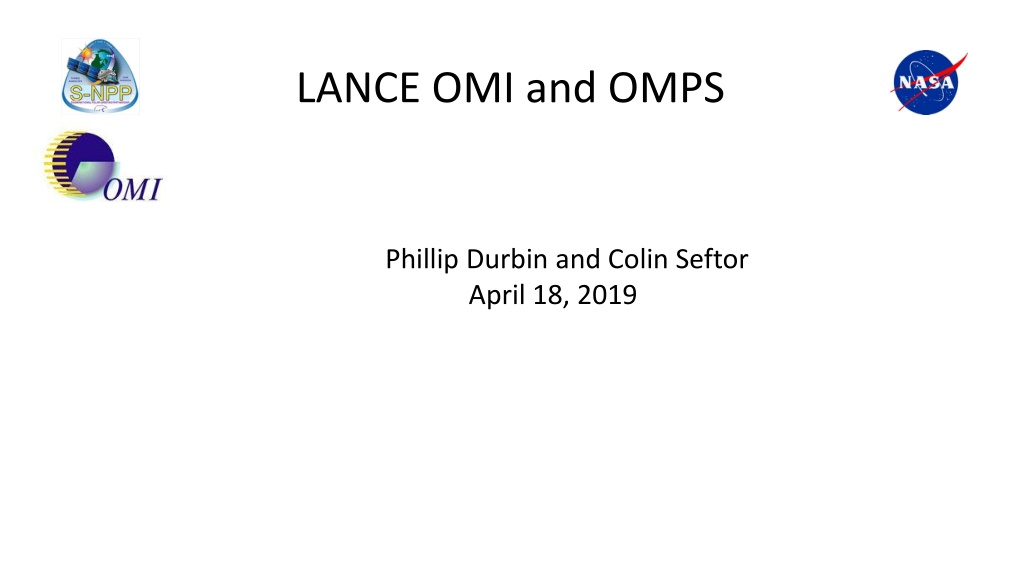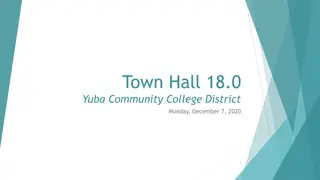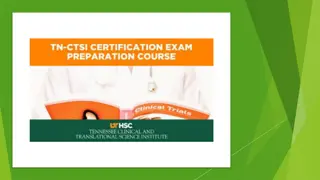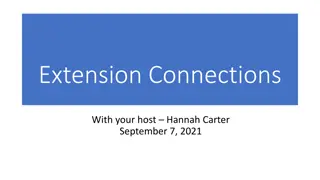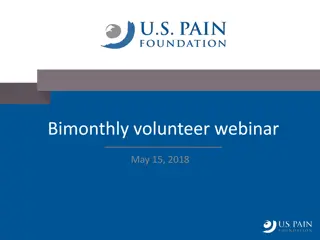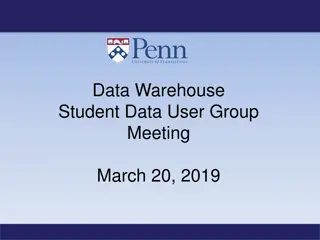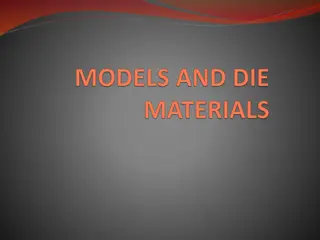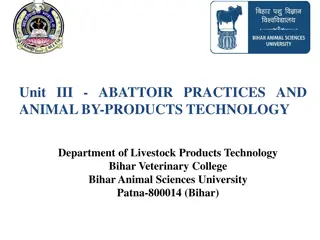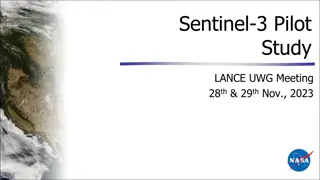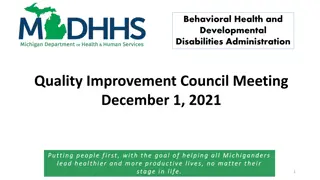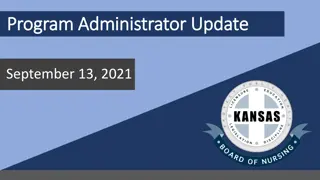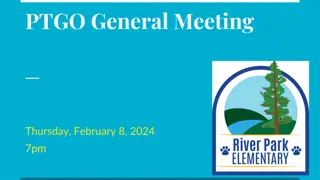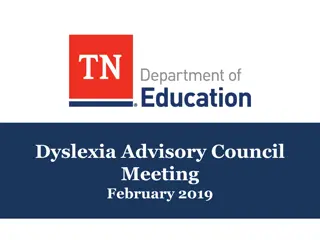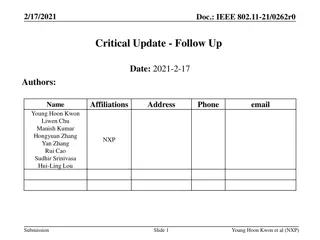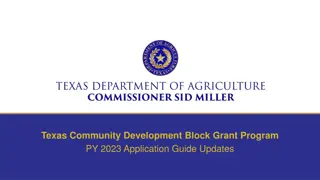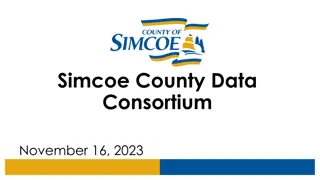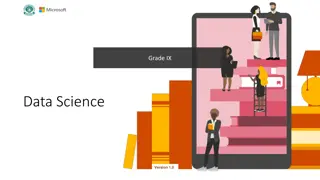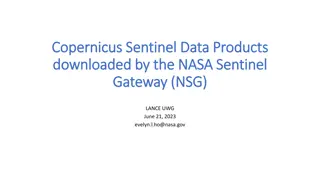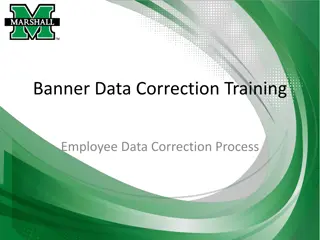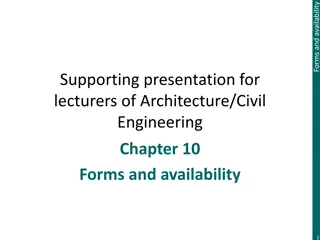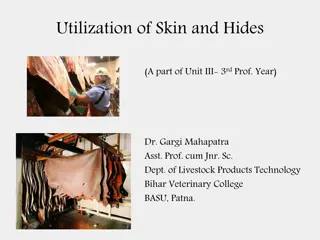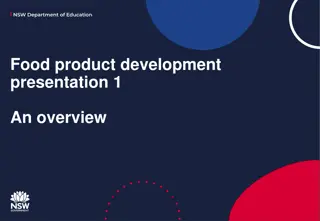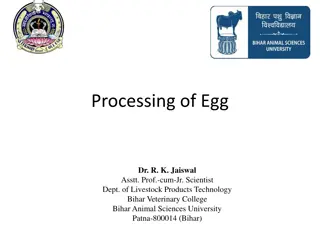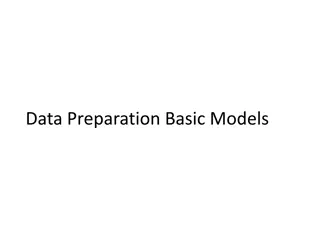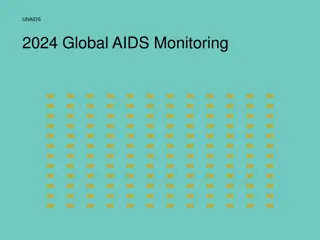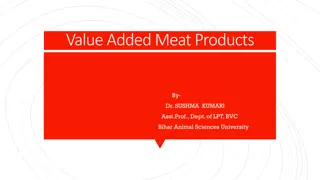Updates on OMI and OMPS Data Products
Status and future developments of OMI and OMPS data products include the preparation of new algorithms, upcoming releases, incorporation into LANCE, validation processes, and delivery timelines. Updates range from OMI Total Ozone algorithm version (OMTO3) to OMPS-NPP LANCE Data Products and OMPS SNPP progress, highlighting enhancements in data retrieval algorithms, noise reduction, and cloud effects reduction. The transition to netcdf4 format and the introduction of new products signify advancements in satellite data processing for atmospheric monitoring and research.
Download Presentation

Please find below an Image/Link to download the presentation.
The content on the website is provided AS IS for your information and personal use only. It may not be sold, licensed, or shared on other websites without obtaining consent from the author. Download presentation by click this link. If you encounter any issues during the download, it is possible that the publisher has removed the file from their server.
E N D
Presentation Transcript
LANCE OMI and OMPS Phillip Durbin and Colin Seftor April 18, 2019
Status and Future OMI Products Current OMI processing is nominal with no new changes since May. A new version of the Total Ozone algorithm (OMTO3) version (v9) is being prepared for the final processing and release . Once this is complete a new SO2 algorithm will be released that is expected to have better row anomaly corrections and incremental improvements in science. The SO2 code use OMTO3 data as input. A new OMI Collection 4 will be implemented over the next year . A new Level 1B and level 2 products that use netcdf4 are expected.
OMPS-NPP LANCE Data Products Algorithm Product(s) Product format(s) Owner Delivery NM/NP Level 1B NM/NP Level 1B HDF5 Glen Jaross Spring 2017 V8.6 Nadir Total Column L2/LANCE TC ozone, reflectivity, and aerosol index HDF5 Rich McPeters Spring 2017 V8.6 Nadir Ozone Profile L2 nadir ozone profile HDF5 Rich McPeters Spring 2017 Principal Component Algorithm (PCA) V9 Nadir Total Column LANCE SO2 HDF5 Can Li Winter 2017 L2 total column ozone and reflectivity HDF5 Rich McPeters Fall / Winter 2019 Aerosol Index L2 aerosol SSA & aerosol layer height HDF5 Omar Torres Spring 2019 Current New
OMPS SNPP LANCE Progress A new Aerosol Index product is being is being prepared for release Current OMPS AI is byproduct of total ozone retrieval algorithm V9 of this algorithm will not generate such a byproduct Utilizes an improved algorithm Models clouds using Mie scattering Uses more realistic Fresnel reflection off of water instead of Lambertian Results have less noise, less cross-track dependence, and fewer cloud effects Close to being released to GES DISC Once released, product will be introduced into LANCE The associated imagery has already been ported The new code and old code will run in parallel for 1 month before removal of the old data. V9 Total Column Ozone still being validated New soft calibration may be applied, with a subsequent reprocessing Once complete, will be delivered to GES DISC Will then be incorporated into LANCE
OMPS SNPP and Real Time OMPS - OMPS SIP recently delivered to the Direct Readout Lab (DRL) a complete package of source code libraries, etc. - Part of their requirements for incorporation into their IPOPP package - Package was successfully tested and approved - One of the first (if not the first) set of NASA L2 SNPP algorithms to be delivered and approved for incorporation - Currently being beta tested through GINA (Alaska) and FMI (Finland) - Only two facilities that previously processed and released OMPS data using executables delivered through the DRL by the OMPS SIPS - Once results have been validated by science team members, will be released, through IPOPP, to the larger DRL community
N20 OMPS Status Receiving session based data on our primary string and have L1B running. Awaiting guidance from the OMPS SNPP science team to produce/deliver L2 products. SO2 group has recently expressed interest in both NRT and RT products to support disasters effort N20 OMPS NM has improved spatial resolution (4 times better than S-NPP OMPS NM) NASA is slowly proceeding to analyze and correct for post-launch calibration issues Small amount of funding provided by NOAA for this purpose Few, in any, other resources being expended for this Because of the interest of the SO2 group, the calibration effort is being (slightly) increased May have a well-calibrated L1B and soft calibration factors for L2 by late fall, early winter
Data Usage Examples An example of how the OMI and OMPS-NPP data from LANCE are used for aviation warnigns. - SO2 and Aerosol Index data from OMI and OMPS-SNPP are pulled by NOAA and volcanic hotspots areas are identified on . - The data retrieved from LANCE is transformed into McIDAS, a sophisticated, video-interactive set of tools for manipulating satellite imagery, conventional meteorological observations, and other environmental information at VAAC. - USGS and the Alaska VAAC use this data in their analysis to provide the FAA with aviation warnings. - Similarly FMI use OMI data from their Direct Readout and OMPS-NPP Direct Readout and NRT to produce SO2 and Aerosol Index to provide warning data via the Support to Aviation Control Service (SACS) website http://sacs.aeronomie.be/nrt/ for European VAAC and Aircraft warnings.
Data Usage Examples An example of the SO2 from Mt Etna. Users can also see the cloud and Aerosol Index (AI) also. The data can be downloaded in various formats used by the VAACs .
Data Usage Examples - SACS uses OMPS and OMI data from the Direct Readout (DR) and NRT . - They use data from a set of missions . - The DR data (not shown) is replaced once the newer NRT data is available.
